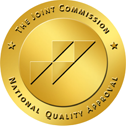Content Reviewed by Gillian Bieler, LCSW, CSAT, Clinical Director
Raves, festivals and clubs are home to a number of illicit drugs that alter the perception of reality and induce changes to the state of mind and bodily sensations. How one feels and behaves and associates risks depends on the drug being used.
Why do people use party drugs?
Drugs are frequently found at parties—or used before going to a party—for a number of reasons. Some individuals are shy in social situations and want to come out of their shells so they can enjoy themselves. They might think that using substances will make them appear more fun or pleasant to be around. Others may genuinely enjoy experiencing an altered state of reality and look forward to feeling the drug’s unusual or euphoric effects.
For some people, however, drug use is not about either of these things. Instead, they use substances to escape themselves and the constant chatter and chaos in their minds. Self-medication in this respect can be an indication of unresolved trauma or an underlying mental health condition. Finally, some individuals take drugs because their friends are doing it. Even for adults, peer pressure can be a strong motivator.
Party drugs impact the body and mind.
There are many types of drugs used at parties. Although, some of the more commonly used ones include cocaine, MDMA, ketamine and LSD. Each of these drugs belongs to different classification and has different psychoactive effects and potentially harmful health impacts.
Cocaine
Cocaine is a stimulant used at parties for its energizing and euphoric effects. Cocaine can cause a person to experience enhanced mental clarity and mood and to become excessively talkative and excited. On the other hand, cocaine use can result in a number of serious and even dangerous side effects such as:
• Substance use disorder (SUD)
• Tremors, irritability, anxiety, and panic attacks
• Reduced appetite, weight loss, insomnia
• Paranoia, violent behavior, and psychosis
• Cardiac or cardiovascular complications, stroke, and seizures
• Increased heart rate, blood pressure, body temperature, and metabolism
MDMA
MDMA—also known as Molly or Ecstasy—is similar to both cocaine and LSD in that it is classified as a stimulant and a hallucinogen. MDMA is one of the most common party drugs, particularly at raves and festivals. This drug produces mild hallucinogenic effects, increased tactile sensitivity, lowered inhibition, sweating and chills. MDMA is also called the “love drug” due to its ability to induce empathy and tenderness towards others. This drug can also bring about miserable side effects that become evident after the drug has worn off, including:
• Anxiety
• Hyperthermia
• Muscle cramping
• Impaired memory and cognition
• Sleep disturbances
• Substance use disorder
• Severe low mood or depression
Ketamine
Ketamine belongs to a class of dissociative drugs that can cause an individual to feel euphoric and silly while experiencing a separation from their body and surroundings. This potent drug provides sedative, stimulating and hallucinogenic effects all at the same time. Some use it to relieve pain and stress from daily life. However, this ketamine use comes at a high risk and can cause the following negative consequences:
- Anxiety
- Tremors
- Amnesia
- Immobility
- Overdose and death
- Substance use disorder
- Impaired motor function
- Respiratory depression and arrest
LSD
LSD is a hallucinogenic compound that produces altered states of perception and feeling. Similar to MDMA, LSD can produce profound feelings of happiness, deep connection, and enhanced tactile and emotional sensitivity. Unlike MDMA, this drug does not produce the same depressive symptoms the next day. Frequent use of LSD, particularly in high doses can cause lasting mental changes and psychosis; the latter is a debilitating condition where the individual cannot distinguish between reality and their imagination.
LSD can have other effects on the body, such as:
• Nausea
• Paranoia
• Dizziness
• Flashbacks
• Loss of appetite
• Impulsive behavior
• Inability to sleep
• Rapid shifts in emotion
• Substance use disorder
• Frightening hallucinations
• Increased heart rate and blood pressure
• Increased body temperature and sweating
Similar examples: psilocybin, DMT and mescaline
Substance use disorder can be treated.
Whichever drug a person decides to use at a party— and whatever reason motivates them—serious and even life-threatening risks are present for all party drugs. The drugs listed above can result in a substance use disorder and possibly addiction, leading to other complications down the line including mental conditions like psychosis. Luckily, substance use disorders involving party drugs can be treated safely and effectively in medical detox and residential treatment.
Cocaine, MDMA, ketamine and LSD are common drugs found at parties. Each drug belongs to a different classification and has varying implications on a person’s mental and physical health. Abusing party drugs can lead to a substance use disorder or addiction; some may even result in overdose and death. Casa Palmera is a fully licensed treatment facility for substance abuse and co-occurring mental health disorders. We want to help you uncover the reasons that drew you to party drugs and assist you in finding your path to a fulfilling and happy life without them. Our residential treatment program offers a number of clinically driven and holistic modalities to help you achieve this. Our experienced team of clinicians will be by your side to help you along the way. Contact us today to learn more about the different substance use disorders we treat. Recover your authentic self with Casa Palmera.




